I may have narrowed the search for my perfect amber. I need to say that at the onset because it’s quite an unexpected, unlikely thing. Certainly, I didn’t expect to like — let alone adore — a scent described as “cinnamon apple pie” by most commentators. I am not a fan of foody or gourmand perfumes. And I am most definitely not a fan of paying high prices to smell like cloying dessert. But there is something intoxicating, sensuous, comforting and unexpected about Hermès‘ Ambre Narguilé. Of course, the incredibly intense 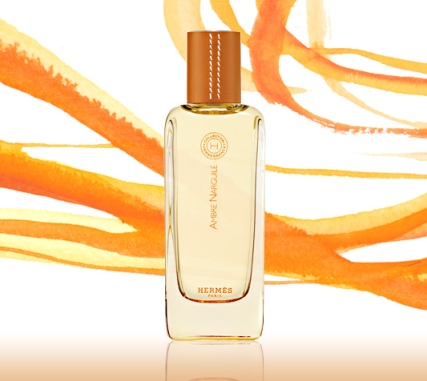 fumes of rum that emanated from my arm for a few hours may have intoxicated my normal sensibilities, but this really is a boozy amber and tobacco scent par excellence.
fumes of rum that emanated from my arm for a few hours may have intoxicated my normal sensibilities, but this really is a boozy amber and tobacco scent par excellence.
Ambre Narguilé was released in 2004 as part of Hermès’ exclusive, in-store Hermessence line of fragrances. It was created by Hermès’ in-house perfumer, Jean-Claude Ellena, a legendary perfumer who was recently called by Der Spiegel “the best ‘nose’ in the world.” Ellena is known for his minimalistic approach to ingredients, and for perfumes that always have depth and complexity, despite seeming sheer and transparent. That sheerness is rather a signature of his and, as I will explain later, a significant aspect of Ambre Narguilé.

Jean-Claude Ellena. Source:CaFleureBon
On the Hermès website, Jean-Claude Ellena describes Ambre Narguilé as “[a]mber honey with swirls of smoke from the East. Savory, sensual, enveloping.” (Narguilé means a tobacco water pipe, or hookah, in French.) His goal in creating the perfume was as follows:
Amber, the Western expression of Eastern fragrances, has a warm, enveloping, almost carnal smell. I wanted to imbue this idea of amber with the memory of the East I love where tobacco – blended with the smells of fruit, honey and spices – is smoked in narguilés, or water pipes, and where swirls of smoke diffuse a sweet sense of intoxication.
The Fragrantica classifies Ambre Narguilé as a spicy oriental, but it doesn’t list the full notes. From what I’ve read in a few comments, the complete list seems to be:
benzoin, labdanum, musk, vanilla, caramel, honey, sugared tonka bean, grilled sesame seeds, cinnamon, rum, coumarin, and white orchid.
The opening burst of Ambre Narguilé was a huge surprise to me. From all the comments, I had expected a massive dose of cinnamon apple pie. I was fully intent on hating the perfume and, actually, I wondered why I was even bothering at all. After all, no good thing can come of a scent described as gourmand, right? Well, wrong. I clearly need to remind myself not to prejudge a whole category of perfumes. (Except soapy-clean laundry detergent scents. There, I plan to continue to prejudge as much as ever.)
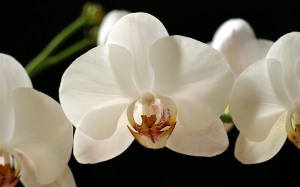
Source: Fabio Visentin
Instead of a cloying dessert, Ambre Narguile opened as a spicy, sweet white floral. I blinked. White orchid? I never expected to smell white orchid with that list of potent, warm ingredients. But I did now. The perfume was a rich, floral vanilla with toasted, warm tonka bean, white rum and a hint of tobacco. I didn’t get any of the heavy powder that often goes with tonka bean, especially in Guerlain fragrances where the tonka bean’s powdery notes are responsible in large part for the signature Guerlinade. I wonder if perhaps toasting the bean made a difference and warmed up the notes instead of bringing out its more powdery side? Whatever the reason, the vanilla from the tonka bean was sheer, not cloying.

Tonka Beans.
Two minutes in, suddenly, the cinnamon apple pie hits me. It’s incredibly concentrated, particularly for a scent that does not, in fact, have any apples in it! It’s odd; Ambre Narguilé is still a spicy floral scent, but now, it is also slightly gourmand. A few minutes later, the apple becomes a bit less predominant and I get a strong burst of rum, raisin, rum raisin, rum, rum and more rum. It’s not the light white rum of the start, but dark, black rum. The sort you see in pirate movies. There is so much rum, I feel a bit light-headed and drunk from it, but in the best way possible. I also suddenly feel as though I’ve had rum raisin pie that has a strong dash of saffron in it. Good lord, that’s good! I ponder whether to put on Johnny Depp in Pirates of the Caribbean.
About fifteen minutes in, I smell the faintly smoky aspects of the labdanum wrapping itself around the boozy resins. There is such a rich, nutty, smoky feel to the amber that it feels as though there is Siam Resin in there. And the apple suddenly seems a lot more like cooked plums than the apple of a strudel. I’m surprised that such a sweet, rich scent isn’t actually all that sweet. There is a dryness that I think comes from the labdanum which prevents this from being cloying or too dessert-y. The dryness makes me agree a lot more with Fragrantica’s description of this as a “spicy oriental” and not as a gourmand fragrance. It also adds to the impression that Jean-Claude Ellena had intended: shimmering, swirling whispers of smoke. He was right: the smoke helps to “diffuse” the sweetness, as does the hay-like aspects of coumarin.
After twenty more minutes of alternatively contemplating rum-drinking pirates and wanting to eat my arm, Ambre Narguilé starts to change. There is the lovely opening hints of tobacco but not just any tobacco. I smell my late uncle’s pipe: sweet, floral, almost rose-like, with fruity and apple overtones to its spiced tobacco. It’s such a strongly evocative scent that I suddenly miss him very much. The rose and apple

A Middle Eastern hookah water pipe or narguilé.
overtones also call to mind memories of using a hookah, or water pipe, a few years ago when that trend was very “in” and popular. The tobacco there — as in Ambre Narguilé — was never acrid, bitter, burning or strong like that of cigarettes, but lighter, softer, warmer, sweeter, and aromatically fruity. I’m amazed by just how well Ellena has nailed the hookah or narguilé aspect of things in this perfume. Clearly, it’s a result (in some part) of the labdanum, coumarin, and tonka bean, but that doesn’t really explain how he managed fruity, rosy, floral pipe tobacco in a perfume that has neither fruit nor any significant florals! I can’t understand it.
Another thing I can’t understand is just how sheer this scent is, while simultaneously being rich, narcotic and heady. So many of the reviews of Ambre Narguilé reference its “sheerness” and “transparency,” references which had made absolutely no sense to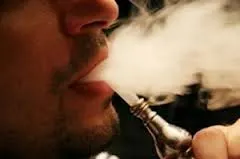 me when I’d read them a few days ago. How could those two adjectives be used to describe a perfume as rich and sensuously deep as this one was supposed to be? I was baffled. Now, however, I can completely understand it. For such a seemingly gourmand scent, it is neither cloying nor diabetes in a bottle. It’s somehow light and airy, while simultaneously being almost narcotic-like in its headiness. It’s hard to explain, but imagine a light breeze. It gently wafts passed you, but it carries a maximum burst of concentrated smell.
me when I’d read them a few days ago. How could those two adjectives be used to describe a perfume as rich and sensuously deep as this one was supposed to be? I was baffled. Now, however, I can completely understand it. For such a seemingly gourmand scent, it is neither cloying nor diabetes in a bottle. It’s somehow light and airy, while simultaneously being almost narcotic-like in its headiness. It’s hard to explain, but imagine a light breeze. It gently wafts passed you, but it carries a maximum burst of concentrated smell.
I think only someone like Jean-Claude Ellena could manage such a seeming contradiction in spirit, and manage it quite so deftly. Perhaps he really is a “luminist” as he was recently described on Ca Fleure Bon, the haute perfume site of experts. They called him a “luminist” in terms of both his approach to ingredients and the final result. What I think they’re talking about is that he is a rare perfumer who manages to use a small range of ingredients in a way that illuminates them with both lightness and the most concentrated aspect of their essence. (At least, that’s how I interpreted their comments.)
Here, Ellena blends together a range of rich, ambery, spice ingredients in a way that amplifies their essence, while simultaneously creating an airy feel. Ambre Narguilé has huge sillage, but you can also smell the concentrated nature of the ingredients. Yet, none of them are cloying or excessively sugary. More importantly, none of them are synthetic or artificial. There is no sharp screech of synthetic compounds, no clanging or burning in your nose, and no vaguely plastic-y tones.
Instead, it’s an incredibly well-blended, heady, cozy scent that has subtle transitions. The changes from stage to stage are not abrupt; the perfume moves seamlessly from that opening burst of white floral vanilla and white rum, to the cinnamon apple pie stage, to the rum raisin and rum, then to the tobacco, before ending in its final stage. Almost 6 hours later, Ambre Narguilé turns into a tobacco and wood scent with a leather undertone. The woody notes almost smell like cedar, but it is the leathery undertone to the pipe tobacco that suddenly explains why I like this scent so much: it reminds me of my beloved Karl Lagerfeld for Men (vintage) that is one of my favorite old fragrances to wear. Ambre Narguilé has the rich tobacco with the amberous, incense and leather feel of the Lagerfeld, but without the latter’s powder notes and with a hell of a lot more rum.
Which brings me to popular dessert smells from brands like Philosophy, Bath & Body Works, Britney Spears (for example, Fantasy which evokes floral supermarket cupcakes), Jessica Simpson (for example, Fancy, which evokes caramel and vanilla), and the like. I like Philosophy and BBW for what they are, and I have owned a number of things from each. (I have never owned Britney Spears or Jessica Simpson, and I never shall.) But, let’s admit it, the fragrances they create are completely artificial. To be as polite as I can possible be, they don’t smell particularly expensive, mature or natural. They are huge money-makers and extremely popular, but they are not expensive in scent or in cost. One reason for their profitability is the use of artificial, synthetic compounds which are significantly cheaper to use. The drawback to these artificial compounds is that they can be extremely sharp, cloying, excessively sugary and one-dimensional.
There is nothing artificial or cheap about the smell of Ambre Narguilé. It doesn’t smell of synthetics. It smells extremely expensive. And I don’t think you could get a comparable scent among the commercial, mass-produced, gourmand fragrances out there. According to a commentator on Basenotes, the famous NY Times perfume critic, Chandler Burr, said Ambre Narguilé:
is not merely the best; there is simply nothing like it on the market, period. And no one will ever do it as well again.
While I love the scent, I think Mr. Burr is pushing it and waxing a little too rhapsodic. But I do agree with him to an extent because I am convinced that there is no-one who could do it better amongst the plethora of dessert scents littering the aisles of Macy’s, Dillard’s, Sephora or the like.
But what about higher-end perfume houses? There, Ambre Narguilé would seem to have serious competition in terms of quality, as well as some overlap with existing amber scents. I’ve read a lot of comparisons on Basenotes to Frederic Malle‘s Musc Ravageur, though there seems to be no consistency in the comments as to how they differ or are alike. Some say that Ambre Narguilé is like Musc Ravageur’s dry-down, only sweeter and less musky. Others say the exact opposite. Interestingly, a Basenotes poll asking for people’s preference between the two resulted in a complete 50/50 tie. Other potentially similar scents that have been mentioned: L’Artisan Parfumeur‘s Ambre Extreme (said to be less spicy than the Hermès); Parfum d’Empire‘s Ambre Russe (said to be significantly richer, spicier and deeper than the Hermès); and Frapin 1270. I hear the last one mentioned a lot on MakeupAlley as an almost complete dupe for Ambre Narguilé (which has a 4.3 out of 5 score there). Unfortunately, I haven’t smelled any of those fragrances, so I cannot judge, but if you own one of them, you may not need Ambre Narguilé.
Do you, in fact, need Ambre Narguilé? That’s hard to say. For all its loveliness, I will be the first to say that it is really quite a simple, linear scent. Yes, it has transitions but, as a whole, it isn’t a complex, heavily nuanced, perfume that constantly transforms and morphs. The notes are essentially the same, though they vary as to degree or to the ingredient being emphasized, with more fruity notes at the beginning and strongly tobacco notes accompanying faintly leathery, woody accords at the end. But amber and tobacco are constant threads running from top to bottom in some form or another. As I frequently say, there is nothing wrong with linearity if you love the notes in question. And I think comfort scents are, in particular, more suited to being linear.
In terms of sillage and longevity, Ambre Narguile does well in both categories. The perfume projects for the first 2 hours quite forcefully before becoming slightly softer and more subtle. It became close to the skin about 4 hours in. And it lasted, all in all, about 7 hours on me. (Again, I have skin that ravages perfume.) On others, however, the average length of time seems to be between 12-15 hours! That is remarkable for a scent that is a mere eau de toilette. The famous perfume critic, Chandler Burr of the New York Times, told Oprah:
The rule is: Pretty is fleeting; heavy sticks around. Take the utterly genius Hermès Ambre Narguilé. Here’s a perfume of such luscious perfection, you want to melt into it as if it were an expert beurre caramel. Ambre Narguilé will not only dance all evening with the one that brung it, it’ll take you all the way home, too.
Perhaps the dispositive issue with Ambre Narguilé is its cost. It costs $235 and is sold only in the large 100ml/3.4 oz bottles directly from Hermès itself (whether online or via its boutiques). It doesn’t come in any other size and, again, it only comes in the eau de toilette concentration. However, and this part is key, Hermès sells a travel or gift set of

The Hermès travel or gift set.
four 15 ml/0.5 oz bottles for $145. You can get 4 bottles of any perfumes in the Hermessence line, or all 4 can be the same perfume, such as Ambre Narguilé. In short, for $145, you would be getting 60 ml or about 2.0 oz of perfume, which is more than the standard 1.7 oz bottles for perfumes. As such, it is a much more manageable price. However, even then, it is still more expensive than Ambre Narguilé’s amber counterparts: Lucky Scents sells Frapin 1270 in a 100 ml bottle for $155, while Parfum d’Empire’s Ambre Russe is $75 for 50 ml and $110 for 100 ml. Despite their more affordable cost, however, more than enough people (including a number who seem to own one of the other amber scents) can’t seem to live without Ambre Narguilé and shell out $145 for the gift set. It all depends on how much you love boozy, smoky amber and if you consider Ambre Narguilé to be “utterly genius,” or just merely adequately cozy.
I started this review by saying that I had narrowed my search for my perfect amber. If Ambre Narguilé cost less, that search might be over. I really like it that much, and it makes me feel happy. (My German shepherd also adored it and jumped up to repeatedly lick my arm — which he doesn’t usually do when I’m wearing perfume.) I can’t get over how intoxicating that rum was, or how elegantly beautiful that swirling mist of tobacco. But it is simple. And should simple cost that much?
As in most things in life, price is a very subjective, personal thing, and what is worth it for one person may be too much for someone else. For me, the problem is that I’m extremely picky, am constantly inundated with scents I love or am tempted by, could not possibly buy all the things I’d like to buy in one calender year, and have definite cheapskate tendencies. So, I’m not sure that I would spend $145 for Ambre Narguilé. (I certainly wouldn’t spend $235!)
But I am considering it….
DETAILS:
Ambre Narguilé is available on Hermès’ website at the link provided above. Samples are available at a number of sample sites, as well as on eBay. The site I use, Surrender to Chance, sells it starting at $3.99 for the smallest size. As always, I think they have the best shipping prices, so I would start there if you’re interested in testing out the perfume.






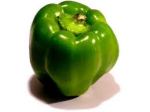




 fumes of rum that emanated from my arm for a few hours may have intoxicated my normal sensibilities, but this really is a boozy amber and tobacco scent par excellence.
fumes of rum that emanated from my arm for a few hours may have intoxicated my normal sensibilities, but this really is a boozy amber and tobacco scent par excellence.


 me when I’d read them a few days ago. How could those two adjectives be used to describe a perfume as rich and sensuously deep as this one was supposed to be? I was baffled. Now, however, I can completely understand it. For such a seemingly gourmand scent, it is neither cloying nor diabetes in a bottle. It’s somehow light and airy, while simultaneously being almost narcotic-like in its headiness. It’s hard to explain, but imagine a light breeze. It gently wafts passed you, but it carries a maximum burst of concentrated smell.
me when I’d read them a few days ago. How could those two adjectives be used to describe a perfume as rich and sensuously deep as this one was supposed to be? I was baffled. Now, however, I can completely understand it. For such a seemingly gourmand scent, it is neither cloying nor diabetes in a bottle. It’s somehow light and airy, while simultaneously being almost narcotic-like in its headiness. It’s hard to explain, but imagine a light breeze. It gently wafts passed you, but it carries a maximum burst of concentrated smell.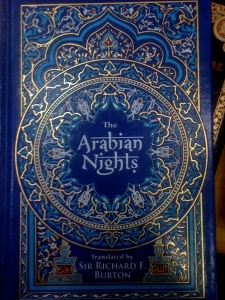 have Ali Baba and a cave filled with treasures of scent and spice, incense and frankincense — not stolen by thieves but given freely by the Sultan with the order to create the most luxurious scent in all the land. Or, it would be the story of “Perfume” without serial killers and death, and with a happy ending.
have Ali Baba and a cave filled with treasures of scent and spice, incense and frankincense — not stolen by thieves but given freely by the Sultan with the order to create the most luxurious scent in all the land. Or, it would be the story of “Perfume” without serial killers and death, and with a happy ending.

 under the guidance of its artistic director, Christopher Chong, and created by the famous orientalist nose, Bertrand Duchaufour. (“Orientalist” is Luca Turin’s description, not mine.) The men’s version was called Jubilation XXV and the women’s version was Jubilation 25. Both versions are eau de parfum concentration and both are essentially considered to be unisex fragrances. Certainly both genders seem to wear the different versions. I have both and plan to review Jubilation 25 tomorrow. For now, let’s focus on the men’s version.
under the guidance of its artistic director, Christopher Chong, and created by the famous orientalist nose, Bertrand Duchaufour. (“Orientalist” is Luca Turin’s description, not mine.) The men’s version was called Jubilation XXV and the women’s version was Jubilation 25. Both versions are eau de parfum concentration and both are essentially considered to be unisex fragrances. Certainly both genders seem to wear the different versions. I have both and plan to review Jubilation 25 tomorrow. For now, let’s focus on the men’s version.
